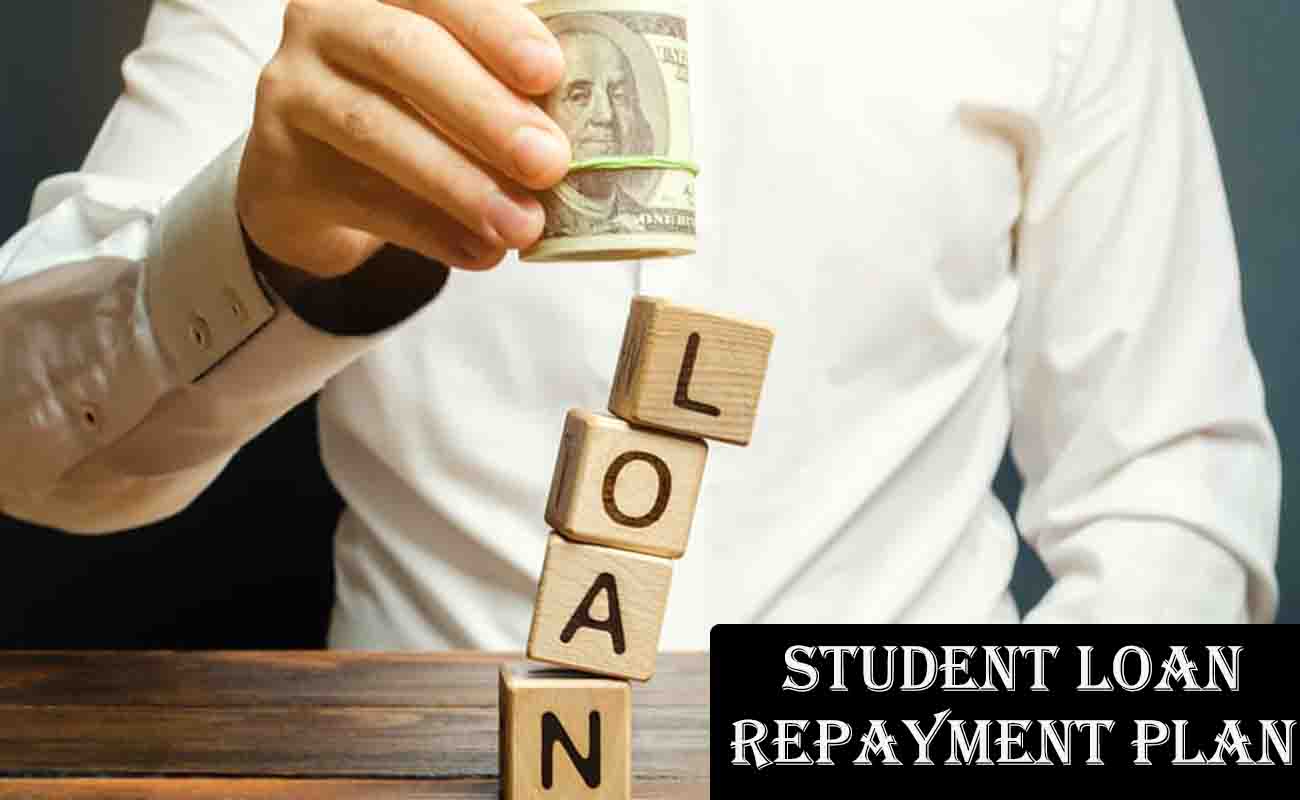Understanding Your Student Loan Repayment Plan Options is very important. Navigating student loan repayment can feel overwhelming, but choosing the right student loan repayment plan can make a big difference in managing your debt.

As someone who’s explored the ins and outs of student loans, I’m here to break down the options for you in simple terms. Whether you’re just starting repayment or looking to switch plans, understanding what’s available can help you find a plan that fits your budget and goals.
As someone who’s dug into the complexities of student loans, I know how important it is to find a student loan repayment plan that works for you. Whether you’re fresh out of college or years into repayment, the right plan can ease financial stress and set you on a path to debt freedom.
In this guide, I’ll walk you through the federal student loan repayment plans available in the U.S., explain how they work, and help you decide which one fits your life. I’ll use simple language, share examples, and include tips to make the process easier for you.
Student Loan Repayment Plans
Federal student loans come with several repayment plans, each designed to meet different needs. Below, I’ll break down the four main types: Standard, Income-Driven, Graduated, and Extended. I’ll also cover special programs like Public Service Loan Forgiveness (PSLF) and options for private loans.
1. Standard Repayment Plan
The Standard Repayment Plan is the default option when you start repaying federal student loans. It’s straightforward: you pay a fixed amount each month for 10 years. This plan is great if you have a steady income and want to pay off your loan quickly while saving on interest.
How It Works
- Your monthly payment is calculated based on your total loan amount and interest rate.
- Payments stay the same each month, making budgeting predictable.
- The loan is fully paid off in 10 years.
Example
If you have a $30,000 loan at a 5% interest rate, your monthly payment would be about $318. Over 10 years, you’d pay roughly $4,160 in interest, according to the Loan Simulator.
Pros
- Lowest Total Interest: You’ll pay less interest compared to longer-term plans.
- Predictable Payments: Fixed payments make it easy to plan your budget.
Cons
- Higher Monthly Payments: Payments can be tough if your income is low.
- Risk of Default: If you can’t afford payments, you might fall behind.
Who It’s For
This plan suits you if you have a stable job and can handle higher monthly payments. It’s the best choice if you want to minimize interest and pay off your loan quickly.
2. Income-Driven Repayment (IDR) Plans
Income-Driven Repayment (IDR) plans are designed for borrowers who find standard payments too high. These plans adjust your monthly payment based on your income and family size, making them more affordable. There are four IDR plans: Income-Based Repayment (IBR), Income-Contingent Repayment (ICR), Pay As You Earn (PAYE), and Saving on a Valuable Education (SAVE).
How IDR Plans Work
- Payments are a percentage of your discretionary income (your adjusted gross income minus 100% or 150% of the federal poverty guideline, depending on the plan).
- If your income is very low, payments could be $0, but interest may still accrue.
- The repayment term is 20 or 25 years, after which any remaining balance is forgiven. Note that forgiven amounts may be taxable, except under PSLF.
Types of IDR Plans
Here’s a quick look at each IDR plan, based on information from NerdWallet and studentaid.gov:
| Plan | Payment Amount | Repayment Term | Forgiveness | Eligibility |
|---|---|---|---|---|
| IBR | 10% of discretionary income | 20 or 25 years | After 20/25 years | Available to most borrowers; payment cap applies |
| ICR | Lesser of 20% of discretionary income or fixed 12-year plan amount | 25 years | After 25 years | Open to all Direct Loan borrowers |
| PAYE | 10% of discretionary income, capped at the Standard Plan amount | 20 years | After 20 years | Newer borrowers (post-2007 loans) |
| SAVE | 5–10% of discretionary income; lower for undergrad loans | 10–25 years | After 10 years for loans ≤$12,000; 20–25 years otherwise | Most Direct Loan borrowers, check updates |
The SAVE Plan
Introduced in 2024, the SAVE plan is the newest IDR option. It aims to cut payments in half compared to other IDR plans and offers forgiveness after 10 years for loans of $12,000 or less. For larger loans, forgiveness kicks in after 20–25 years. As of July 2025, check studentaid.gov for the latest details, as the rollout was ongoing in 2023.
Pros
- Affordable Payments: Payments adjust to your income, sometimes as low as $0.
- Forgiveness Option: Remaining debt is forgiven after the term.
- Flexible: Payments change if your income or family size changes.
Cons
- More Interest: Longer terms mean higher total interest.
- Taxable Forgiveness: Forgiven amounts may count as taxable income (except PSLF).
Who It’s For
IDR plans are ideal if your income is low or unstable, or if you’re aiming for loan forgiveness. They’re especially useful for public service workers pursuing PSLF.
3. Graduated Repayment Plan
The Graduated Repayment Plan starts with lower payments that increase every two years over a 10-year term. It’s designed for borrowers who expect their income to grow over time, like those early in their careers.
How It Works
- Initial payments are lower but can triple by the end of the term.
- The loan is paid off in 10 years, like the Standard Plan.
Example
For a $30,000 loan at 5% interest, payments might start at $250 and rise to $450 by year 10, per NerdWallet.
Pros
- Lower Early Payments: Easier to manage when your income is lower.
- Aligns with Income Growth: Payments increase as you earn more.
Cons
- Higher Interest: You’ll pay more interest than with the Standard Plan.
- Rising Payments: Later payments can be challenging if income doesn’t grow as expected.
Who It’s For
This plan works if you’re starting with a lower salary but expect significant income growth, like in fields such as medicine or law.
4. Extended Repayment Plan
The Extended Repayment Plan is for borrowers with more than $30,000 in federal student loans. It stretches payments over 25 years, with either fixed or graduated payments, lowering monthly costs but increasing total interest.
How It Works
- Choose fixed payments (same each month) or graduated payments (increasing every two years).
- The loan is repaid over 25 years.
Pros
- Lower Monthly Payments: Makes large loans more manageable.
- Flexible Options: Choose fixed or graduated payments.
Cons
- High Interest Costs: You’ll pay significantly more interest over 25 years.
- No Forgiveness: You must repay the full amount.
Who It’s For
This plan is best if you have large loans and need lower monthly payments, but you’re not pursuing forgiveness.
Public Service Loan Forgiveness (PSLF)
If you work full-time for a government or nonprofit organization, you may qualify for PSLF. This program forgives your remaining loan balance tax-free after 120 qualifying payments (10 years) under an IDR plan or the Standard Plan.
How to Qualify
- Work for a qualifying employer (e.g., government, 501(c)(3) nonprofit).
- Make payments under an eligible plan (IDR or Standard).
- Submit employment certification annually and apply for forgiveness after 120 payments.
How to Apply
- Consolidate loans into a Direct Loan if needed.
- Use the PSLF Help Tool at studentaid.gov.
- Track your progress with your loan servicer.
Who It’s For
PSLF is ideal for public servants like teachers, nurses, or government workers committed to long-term public service careers.
Refinancing Private Student Loans
Private student loans don’t offer federal repayment plans like IDR or PSLF. If you have private loans, refinancing might lower your interest rate, but it’s not always the best choice for federal loans.
What to Know
- Refinancing replaces your loan with a new one, often at a lower rate if you have good credit (high 600s or better).
- Federal loans lose benefits like IDR and forgiveness when refinanced.
- Compare lenders at sites like NerdWallet.
Who It’s For
Refinancing suits borrowers with private loans or federal loans who don’t need federal benefits and can secure a lower rate.
Temporary Relief: Deferment and Forbearance
If you’re facing financial hardship, you can pause payments through deferment or forbearance. However, interest may accrue, increasing your debt. IDR plans are often a better option for income-related struggles.
How It Works
- Deferment: Pauses payments, and interest may not accrue on subsidized loans.
- Forbearance: Pauses payments, but interest accrues on all loans.
- Apply through your loan servicer.
Pros and Cons
- Pros: Provides temporary relief during hardship.
- Cons: Interest accrual can increase your balance.
Prepaying Your Loans
Paying extra on your loans can save you money on interest, especially with the Standard Plan. Always specify that extra payments go toward the principal, not interest.
Tips
- Make extra payments when you have extra cash, like from a bonus.
- Check with your servicer to ensure payments are applied correctly.
Choosing the Right Plan for You
Picking the best student loan repayment plan depends on your unique situation. Here are some questions to guide you:
- Can you afford Standard Plan payments? If yes, it’s the cheapest option long-term.
- Is your income low or unstable? IDR plans offer flexibility and potential forgiveness.
- Do you work in public service? PSLF with an IDR plan could be ideal.
- Expect a big income increase? The Graduated Plan aligns with rising earnings.
- Have large loans? The Extended Plan lowers monthly payments but increases interest.
Use the Loan Simulator to compare plans and see estimated payments and forgiveness amounts.
Recent Developments
As of July 2025, the SAVE plan is a key option to explore, as it may offer lower payments and faster forgiveness for smaller loans. However, recent proposals, like those reported by NPR, suggest potential changes to repayment plans, possibly reducing options to just two: a fixed plan or an income-based plan. Always check studentaid.gov for the latest updates.
FAQs
- What’s the best student loan repayment plan?
It depends on your income and goals. The Standard Plan saves on interest, while IDR plans offer lower payments and forgiveness. - Can I switch repayment plans?
Yes, contact your loan servicer to change plans anytime at no cost. - What happens if I miss a payment?
Missing payments can lead to late fees, default, and credit score damage. Contact your servicer immediately for options like IDR or forbearance. - Is loan forgiveness taxable?
Forgiveness under IDR plans may be taxable, but PSLF forgiveness is tax-free. - How do I apply for an IDR plan?
Apply through your loan servicer or at studentaid.gov/idr/.
